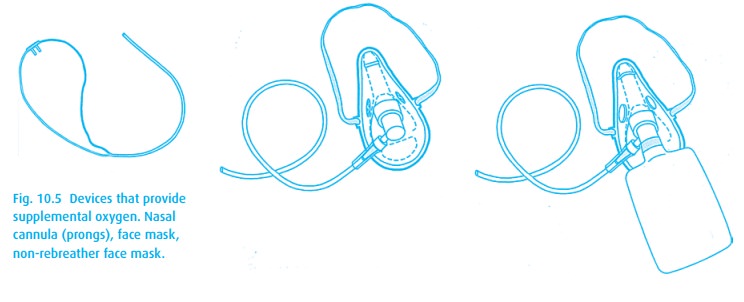Chapter: Essential Anesthesia From Science to Practice : Applied physiology and pharmacology : Anesthesia and the lung
Providing supplemental oxygen
Providing supplemental oxygen
If
breathing room air, a patient’s FiO2 will be 0.21. FiO2
is the fraction of inspired oxygen
(0.21 at sea level as well as on Mount Everest) – frequently confused with the
percentage of oxygen (21%) – frequently muddled with the partial pres-sure of
oxygen (about 150 mmHg at sea level and much less on Mount Everest). We have
several devices to increase the spontaneously breathing patient’s FiO2
(Fig. 10.5):
·
Nasal cannula increases FiO2 about 1–2% per liter (thus
2L delivers about 28% oxygen). Flow rates above 5 L irritate the nose without
further increasing the FiO2.

·
A loosely fitting oxygen mask with an oxygen flow rate of 6–8 L/min
may bring the inspired oxygen percentage to 60−80%.
·
A non-rebreathing face mask can deliver ∼95% oxygen (the bag should be inflated . . .
unlike what the flight attendants tell us).
For each
device, we need an oxygen cylinder,10
a reducing valve to bring the high pressure of a full cylinder to a manageable
40 psi (12 atm), and a flow meter that lets us select a flow rate anywhere from
about 100 mL/min to 10 000 mL/min. The actual inspired concentration of oxygen
will depend on the flow rate of oxygen, as well as the patient’s peak
inspiratory flow rate.
Related Topics